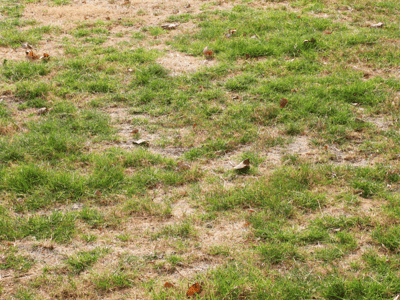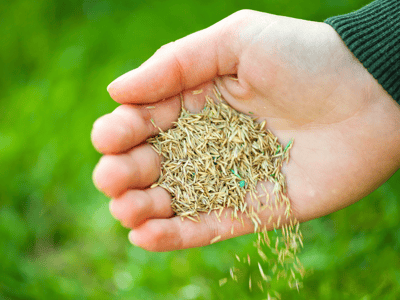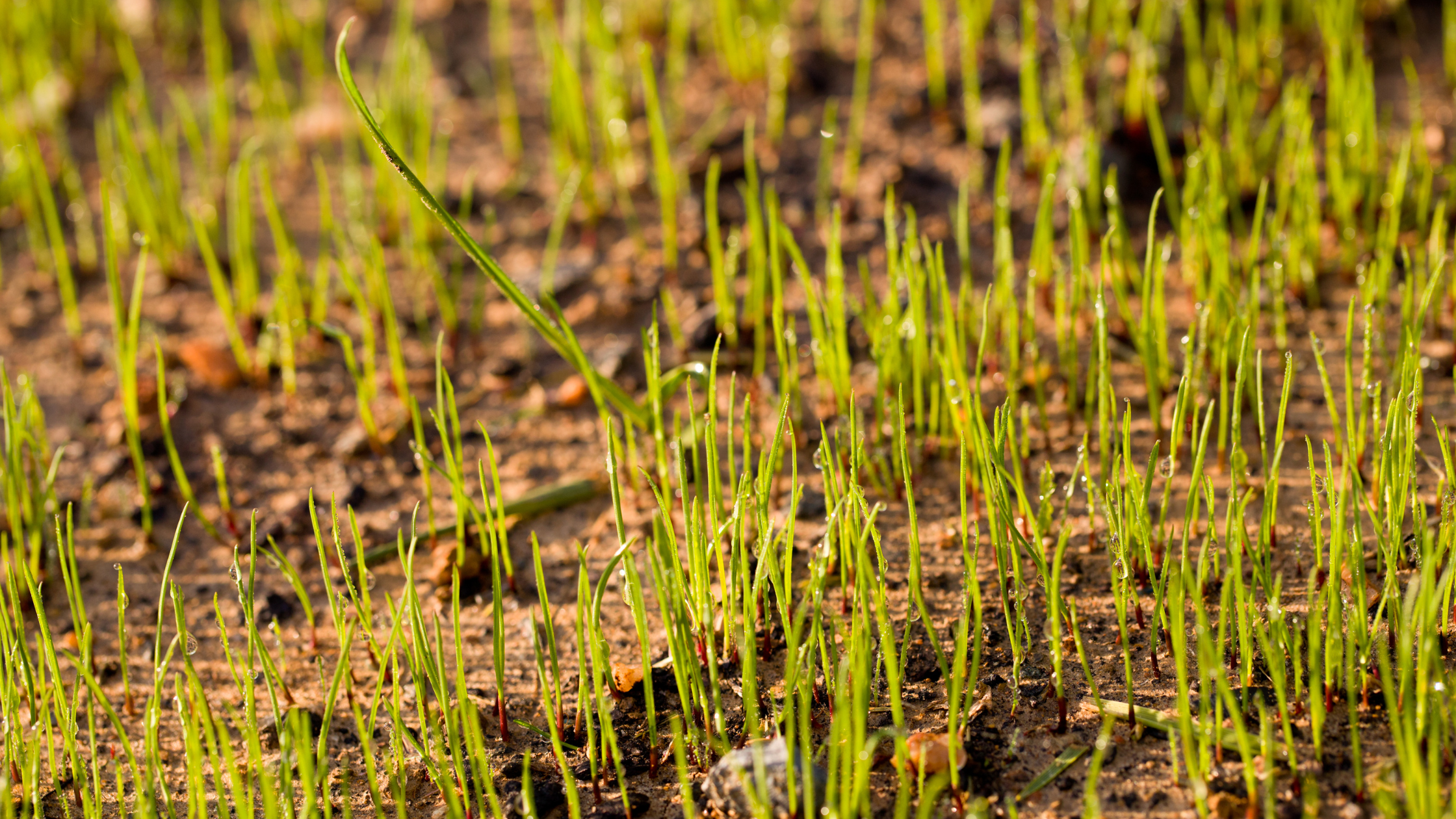A lush, vibrant lawn is the envy of every homeowner. Achieving that picture-perfect lawn requires proper planning, diligent preparation, and meticulous aftercare. Whether you're starting from scratch or rejuvenating an existing lawn, the process of seeding demands attention to detail and a commitment to nurturing the young seedlings. In this essential guide, we'll walk you through the key steps of seeding preparation and aftercare to ensure your lawn flourishes.
Seeding Preparation: Setting the Foundation for Success
1. Assess Your Lawn
Begin by evaluating the current state of your lawn. Identify areas with sparse grass, patches, or signs of disease. This assessment will guide your seeding strategy. Aerating and overseeding your entire lawn can be very beneficial, but you can always just focus on the areas that need the most attention first. What is most important to you?

Different situations require different seeding strategies for the best results.
2. Choose the Right Time
Choosing the right time to seed grass is paramount to the success of your lawn establishment, and fall emerges as the optimal season for this endeavor (mid-August through early October). The cooler temperatures and more consistent moisture levels during the fall months create an ideal environment for seed germination and young grass growth. As the heat of summer subsides and the soil remains warm, seeds can establish roots without the stress of scorching temperatures, ensuring their ability to thrive in the seasons to come. Give yourself enough time to plan ahead!
3. Choose the Right Seed
Select a grass seed variety that is well-suited for your climate, soil type, and intended use. Consider factors like sun exposure and foot traffic to ensure the best results. For example, fine fescue may struggle under a lawn full of children in the full sun, or Kentucky Bluegrass may take too high-maintenance for a low-maintenance lawn.
Depending on the situation, we find a Northeast grass seed mix to be a good balance for the unique climate and soil conditions of New England. With a focus on providing a lush, vibrant lawn that withstands the challenges of both hot summers and cold winters, our Northeast grass seed mix typically includes species like Kentucky bluegrass, fine fescue, and perennial ryegrass.
4. Soil Preparation
Preparing the soil can greatly help seed germination. A light raking to loosen up the top layer of soil or thatch can be beneficial in helping ensure the best seed-to-soil contact possible, especially in hard, compacted, and bare areas. Before seeding those areas, cut the lawn shorter than normal to aid with the new turf growth. Mow the turf around 2" and bag the clippings, being careful not to scalp the lawn.
5. Seeding Technique
Depending on the severity of the lawn's condition, you can opt for traditional overseeding or slice seeding, a it’s best to core aerate with your overseeding to get the most out of it.
Core aeration removes 2-4” plugs of soil from the lawn, which breaks up soil compaction and thatch, allowing water, oxygen, and nutrients to penetrate deeper into the soil and improve overall root development. Overseeding then introduces a custom blend of desirable grass varieties that will help thicken up and fill out your lawn. Conversely, slice seeding cuts ¼" into the soil and drops seed into these grooves, ideal for particularly bare areas.
Seeding Aftercare: Nurturing New Growth
6. Watering
Consistent and adequate watering is essential for the initial stages of growth. This can't be stressed enough.
For the 3-4 weeks after seeding, you should plan to lightly water your lawn 2-4 times a day for around 5-10 minutes each time. It is very important to keep the seed moist but not overly saturated. Adjust these recommendations based on your observations.
7. Mowing
You should wait to mow until your new grass has reached the height you’d normally mow the lawn. Seeded areas should be kept free of foot traffic from people and pets ideally until it has been mowed one or two times. Don’t forget to make sure your mower blades are sharp to avoid injuring your new turf!
8. Fertilization
A well-balanced fertilizer, often called starter fertilizer, can be beneficial at the time of seeding, but don’t overdo it. Follow the instructions on the label, otherwise, you risk damaging or killing the seedlings. Remember: THE LABEL IS THE LAW!
Mainely Grass uses a unique approach in that our seed has been specially coated with a starter fertilizer. This coating not only helps protect the seed and promote moisture retention but it also means that your starter fertilizer is already accurately dosed and applied.
9. Weed Control
Seeding in the fall can help reduce the number of weeds you encounter during seeding, but expect that there may be some weeds that pop up during the initial stages of seeding. This is because the options for treating those weeds without damaging your new, growing turf are limited. In most cases, weed control shouldn’t be applied fewer than 3 weeks before seeding.
It is also important not to spray post-emergent weed control on turf that is still germinating. Additionally, spraying most pre-emergent weed controls before or during seeding will prevent your seed from growing. It is best to wait for the turf to get established before tackling the weeds.
10. Patience
Remember, different species of grass take different amounts of time to germinate. Germination for some species can start in as little as 7 days but will continue for 3-5 weeks. Don't be discouraged if some seedlings are slower to germinate!

Not all grass is created equal! Some species will take longer to germinate.
Let's Go!
Achieving a thick, lush lawn through seeding requires careful planning, diligent execution, and consistent aftercare. By following the steps outlined here, you're taking the necessary measures to ensure the success of your lawn project. Remember, patience is key—establishing a thriving lawn takes time, but the results are well worth the effort.
While the all steps outlined here are certainly doable for homeowners, we understand it can be time-consuming and require a lot of attention to detail. If you want experienced professionals to lay the groundwork for you, we are here to help. Contact us today to discuss your seeding needs!
